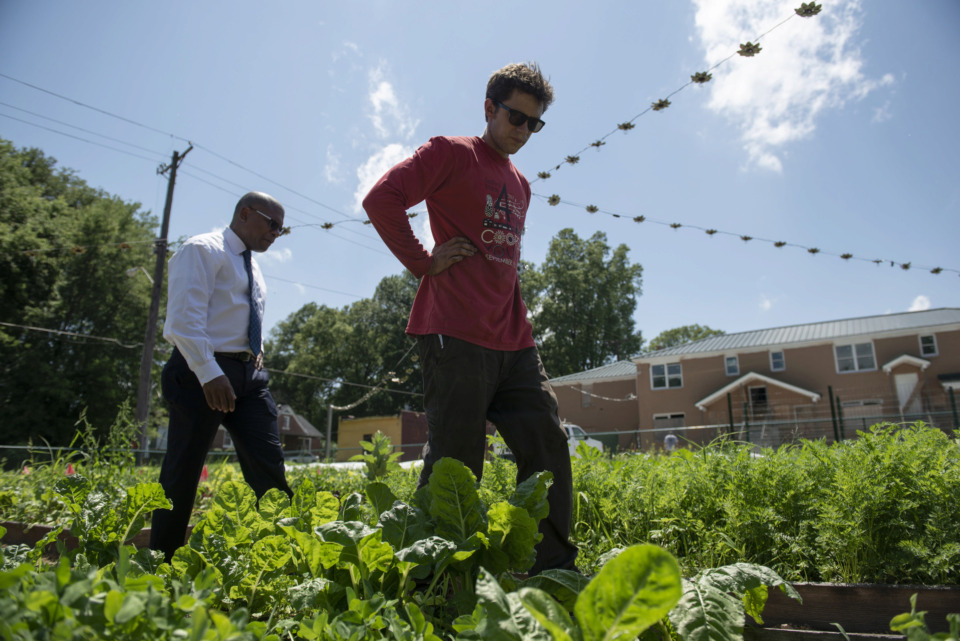The city of Memphis has roughly 56 square miles of vacant land — excluding open space for floodways, conservation and agriculture — with 20% of that being publicly owned, according to Memphis 3.0.
Memphis 3.0, the city’s in-progress comprehensive development plan, stresses “building up, not out.” The plan calls for achieving that through investing in existing places.
“In order to realize this vision, vacant lots will need to become sites for infill, disinvested places will need to receive investment and redevelopment, and underutilized land will need to be repurposed for higher and better uses that improve the quality of life in Memphis,” a draft of the document reads.
Those strategies should be sensitive to the market, growth goals and community preference, the document goes on to state.
“Vacant spaces is a huge component (of Memphis 3.0) and a really big problem in Memphis,” said city of Memphis planner Angelica Carey.
Memphis 3.0 calls for resolving the problem of vacant lands with its “Vacant Lot Activation Toolkit.” The toolkit gives guidance on future use for such lots based on what they are surrounded by and what the community desires and needs. Its reuse matrix then issues recommendations such as nature lots, development lots, home lots or community lots.
Some organizations in Memphis have already turned formerly vacant land to community lots, in the form of gathering spaces, community gardens and recreational places.
They gathered Tuesday, May 21, to share strategies for filling vacant lots and removing blight in the South City Community Resource Center. The site of the panel gathering itself was a repurposed site, formerly home to Booker T. Washington High School’s carpentry shop.
One of those panelists, Marlon Foster, has converted 30 vacant lots and three abandoned buildings in a two-mile corridor along Walker Avenue in South Memphis into a USDA-certified organic farm.
Founding executive director of nonprofit Knowledge Quest, Foster’s master plan centers around “agritourism.”
“We like to tell people, ‘You’re not going to lose your life coming to South Memphis, you’re going to extend your life,’” he said during the gathering. “You’re gonna live longer by coming to South Memphis.”
Knowledge Quest has four programs: an after-school program (the KQ Extended Learning Academies), Family Stability Initiative, Universal Parenting Place and the aforementioned organic farm, called Green Leaf Learning Farm, which features the Jay Uiberall Culinary Academy.
Foster is taking a vacant 10-unit apartment complex and converting it into college dormitories, called the Residences of Green Leaf. His plan is to allow college students to reside in the apartments rent-free, in exchange for working for the nonprofit on a part-time basis.
Foster plans a neighborhood farm stand on the property, akin to a farmers’ market, including space for neighborhood vendors. He’d also like to include a farm-to-table restaurant.
Knowledge Quest’s aims are fostering education, healthy food access, income generation and community development. Foster describes its work as “community-based, neighborhood-level social enterprise.”
“We began to declare value where value wasn’t understood by the populace,” he said.
The Memphis Medical District Collaborative, a community development organization focused on areas in and surrounding the Medical District, has also been tackling vacant spaces.
“Part of improving public life is activating vacant land that we have in the Medical District,” said Mariko Krause, MMDC program associate.
One example of that is Edge Triangle, a former vacant strip of land bounding Monroe Avenue Extended, Monroe Avenue and Orleans Street, which was turned into a pocket park.
The MMDC partnered with Memphis College of Art, University of Memphis Design Collaborative and The Edge District’s neighborhood association for the improvements after interviewing neighborhood stakeholders.
Additions to the Triangle include built-in wooden “Connect Four” games, bike racks, solar panels, solar lighting, movable seating, trash cans, dog waste stations, art installations and paint on the utility easements.
Every quarter, the organization hosts a “Yappy Hour” social event to get people engaged with the space and each other. Those events include music, vendors and activities.
Challenges for the space include maintenance, water not being readily available (MMDC provides water containers for the canine visitors) and people not picking up their pet waste, Krause said.
“Ultimately, when creating these spaces the challenge is how we make sure people keep a shared sense of space and ownership and pride,” she said. “One lesson learned is ‘stay patient.’”
Another local organization that uses art to activate vacant land is the UrbanArt Commission. The organization manages the city’s Percent-for-Art program. It also leverages private funds and partners with other community organizations for public art projects.
“One thing about public art, whether it’s a mural or a sculpture, it can transform a place,” said Ebony Archie, UrbanArt Commission communications and development manager. “Having that mural there or that sculpture there really does elevate and bring vibrancy to that experience.”
As part of the organization’s Blight Out initiative, Memphis artist Tobacco Brown has been meeting with youth in Hickory Hill and talking to them about their neighborhood and its symbols.
Brown is building a sculpture from rebar on a vacant land near vacant houses in the neighborhood. The sculpture could serve as a gateway into Hickory Hill. She’s adding plantings that will grow on the sculpture, which will be the shape of a tree and gold leaf.
UrbanArt also does smaller projects, such as bike racks and benches.
[/et_pb_text][/et_pb_column][/et_pb_row][/et_pb_section]
